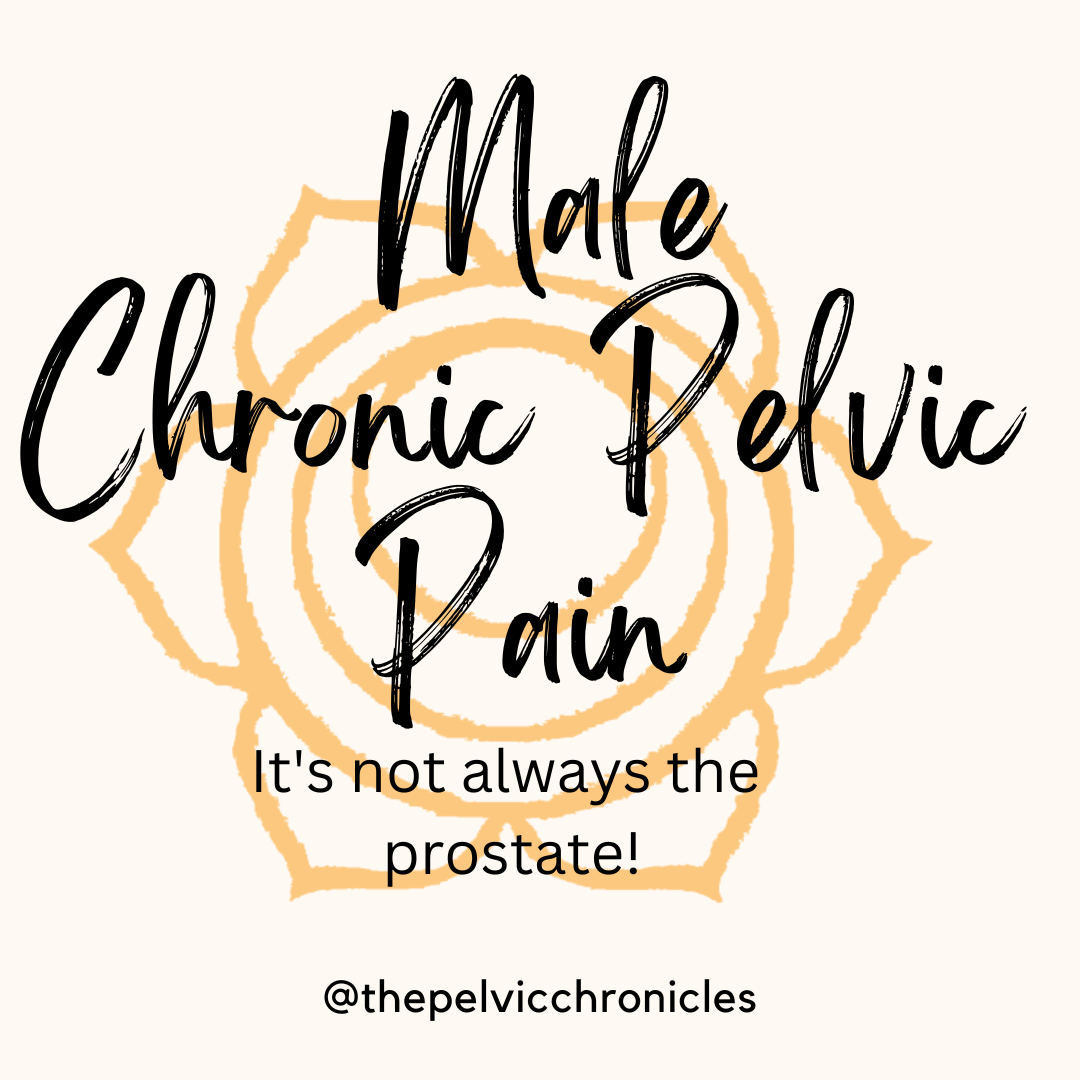In Pelvic Floor Physical therapy, as we look over our patients’ intake paperwork, one thing…

Male Pelvic Pain: It isn’t always your prostate!
Historically, the prostate has been blamed for the main cause of pelvic pain in men. Male pelvic pain is often referred to as “prostatitis”, which suggests an inflammation of the prostate gland, causing the pain. More recently, however, research has shown that in most men, pelvic pain is not caused by or even related to the prostate gland. In fact, The National Institutes of Health has proposed a new name for this condition, “Chronic Pelvic Pain Syndrome” (CPPS) with 4 different types of classifications. We will discuss each type.
CPPS I is what used to be called Acute Bacterial Prostatitis. This presents with acute pelvic pain with a fever and bacteria in urine or prostate secretions. Pelvic pain in this case can be caused by infections such as urinary tract and sexually transmitted infections. This diagnosis needs medical attention and treatment with antibiotics.
CPPS II was known as Chronic Bacterial Prostatitis and has recurrent bacteria found in prostate secretions or urine. There are not usually fevers or other signs of infections with this diagnosis.
CPPS III was known as Non-bacterial prostatitis or Prostatodynia. This diagnosis is by far the most common. There may be inflammatory cells found in the urine or prostate secretions, but NOT bacteria. The cause for CPPS III can often be related to the pelvic floor muscles. This can be tightness or increased tone of the muscles or pressure on nerves or blood vessels in the pelvis causing pain. After ruling out an active infection, pelvic floor physical therapy should be a course of treatment.
CPPS IV has the presence of inflammatory cells in the urine or prostate secretions without any other symptoms.
When it comes to deciding what category of CPPS someone is experiencing, it is important to do a thorough history of the pain, any other symptoms, medical tests or procedures, and prior medications. While a course of antibiotics may be indicated to rule out an infection, most of the time, long-term use of antibiotics is not the best option in the absence of bacteria.
As with most pain, one treatment may not be the answer. It is important to have a team including medical providers and pelvic floor physical therapist. Treatment should include figuring out the cause of pain, managing bowel and bladder routines and irritants, medications, and pain management.
When it comes to male pelvic pain, it is important to consider more than just the prostate. Most likely, the prostate is not causing the pain but is an easy place to blame. We offer a free 15 minute consultation to help answer any questions you may have to make sure you are in the right place for care.




